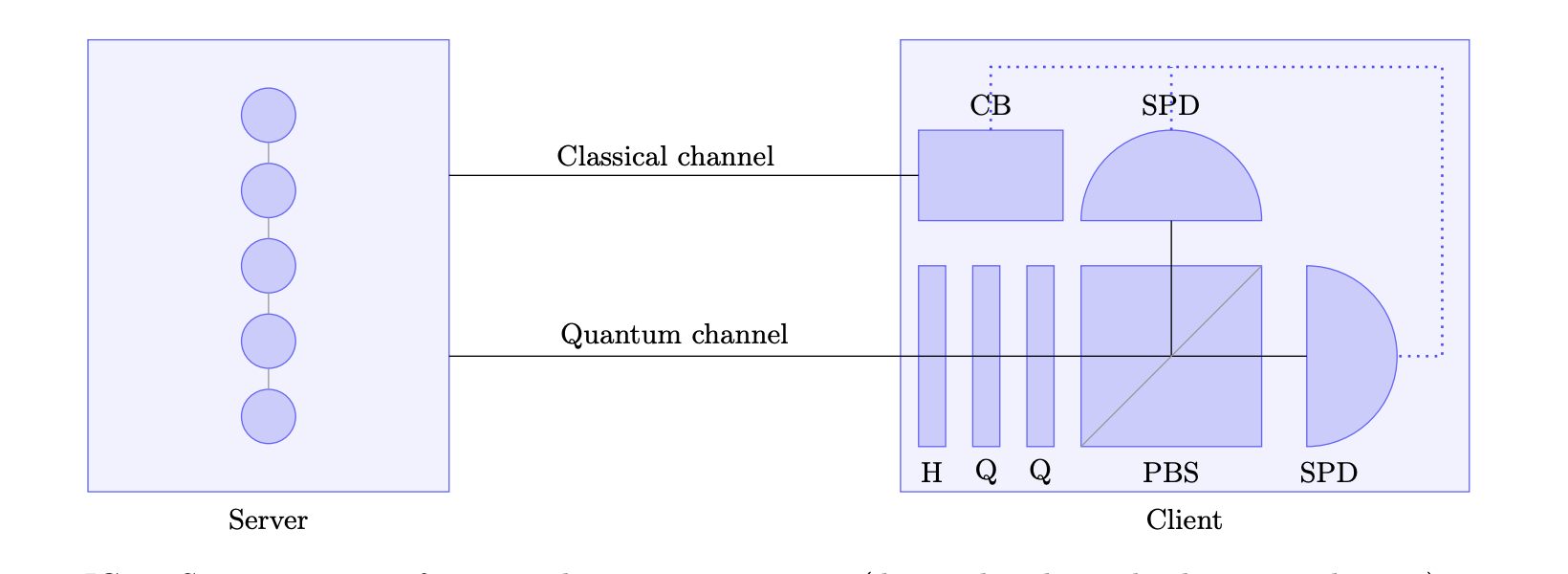Blind Quantum Computing (BQC) allows users to perform quantum computations on a remote server without revealing any data, making it ideal for sensitive information. However, practical implementation is challenging due to distance and hardware imperfections. To address this, a noise-robust verified BQC (rVBQC) protocol was introduced, which tolerates imperfections and system noise. A recent study investigated the hardware requirements for VBQC, using an ion trap as a server and a distant client. The study found that current technology cannot perform blind computation securely over 50 km, but identified ways to improve hardware to reach the required threshold error probability.
What is Blind Quantum Computing and Why is it Important?
Blind Quantum Computing (BQC) is a technique that allows a user to perform quantum computations on a remote server without revealing the input data, the computation, or the output to the server’s owner. This is particularly useful for sensitive data where the user requires access to the computational power of the quantum server without compromising privacy. The concept of BQC is not new, but the challenge lies in its practical implementation, especially when the client and server are separated by significant distances.
The initial BQC protocol was based on measurement-based quantum computation and was later expanded to include verification to test for correctness. This evolved into verifiable blind quantum computing (VBQC) protocols, where the client can abort the computation if the output of certain tests does not meet expectations. However, in realistic near-term noisy quantum devices, imperfections are inevitable. These imperfections and system noise can be mistaken for malicious server behavior, resulting in constant computation abortion and the client gaining little information about the server’s operations.
How Can We Overcome the Challenges of Blind Quantum Computing?
To address these challenges, a noise-robust verified BQC (rVBQC) protocol was introduced. This protocol tolerates imperfections from noise or malicious behavior, provided that the server does not fail more than 25% of verifying tests employed by the client. The robustness to noise is achieved by repeating the computation multiple times and performing classical error correction (majority voting) on the results.
While there have been proof-of-principle demonstrations of BQC and rVBQC in laboratory settings, for real-world practicality, the client needs to be spatially remote from the server. This requires improvements to existing quantum computing and communication hardware.
What are the Hardware Requirements for Blind Quantum Computing?
In a recent study, researchers numerically investigated the hardware requirements for VBQC using an ion trap as a server and a distant measurement-only client. The client, despite having no direct access to quantum computing resources, can remotely execute quantum programs on the server by measuring photons emitted by the trapped ion.
The researchers introduced a numerical model for trapped-ion quantum devices in NetSquid, a discrete-event simulator for quantum networks. Using this, they determined the minimal hardware requirements on a per-parameter basis to perform the VBQC protocol. They benchmarked these for a five-qubit linear graph state, where any single-qubit rotation can be performed, and the client and server are separated by 50 km.
What are the Findings and Implications of the Study?
The study found that current state-of-the-art ion traps satisfy the minimal requirements on a per-parameter basis. However, all current imperfections combined make it impossible to perform the blind computation securely over 50 km using existing technology. Using a genetic algorithm, the researchers determined the set of hardware parameters that minimizes the total improvements required, finding directions along which to improve hardware to reach the threshold error probability that would enable experimental demonstration.
These findings lay a path for the near-term experimental progress required to realize the implementation of VBQC over a 50 km distance. This is a significant step towards making quantum computing more widely available and accessible, especially for use cases involving sensitive data.
What is the Future of Blind Quantum Computing?
The future of BQC lies in overcoming the challenges of distance and hardware imperfections. As the study suggests, improvements in quantum computing and communication hardware are necessary for the practical implementation of BQC. The development of noise-robust protocols and the use of genetic algorithms to minimize hardware improvements are promising strategies towards this goal.
As quantum computing continues to evolve, the demand for secure, remote access to quantum servers will likely increase. BQC, with its potential for privacy-preserving quantum computations, will play a crucial role in meeting this demand. The findings of this study provide valuable insights into the hardware requirements and potential strategies for the practical implementation of BQC, paving the way for future advancements in this field.
Publication details: “Hardware requirements for trapped-ion based verifiable blind quantum
computing with a measurement-only client”
Publication Date: 2024-03-05
Authors: Jeppe Seidelin Dam, Guus Avis, Tzula B. Propp, Francisco Ferreira da Silva, et al.
Source: arXiv (Cornell University)
DOI: https://doi.org/10.48550/arxiv.2403.02656

